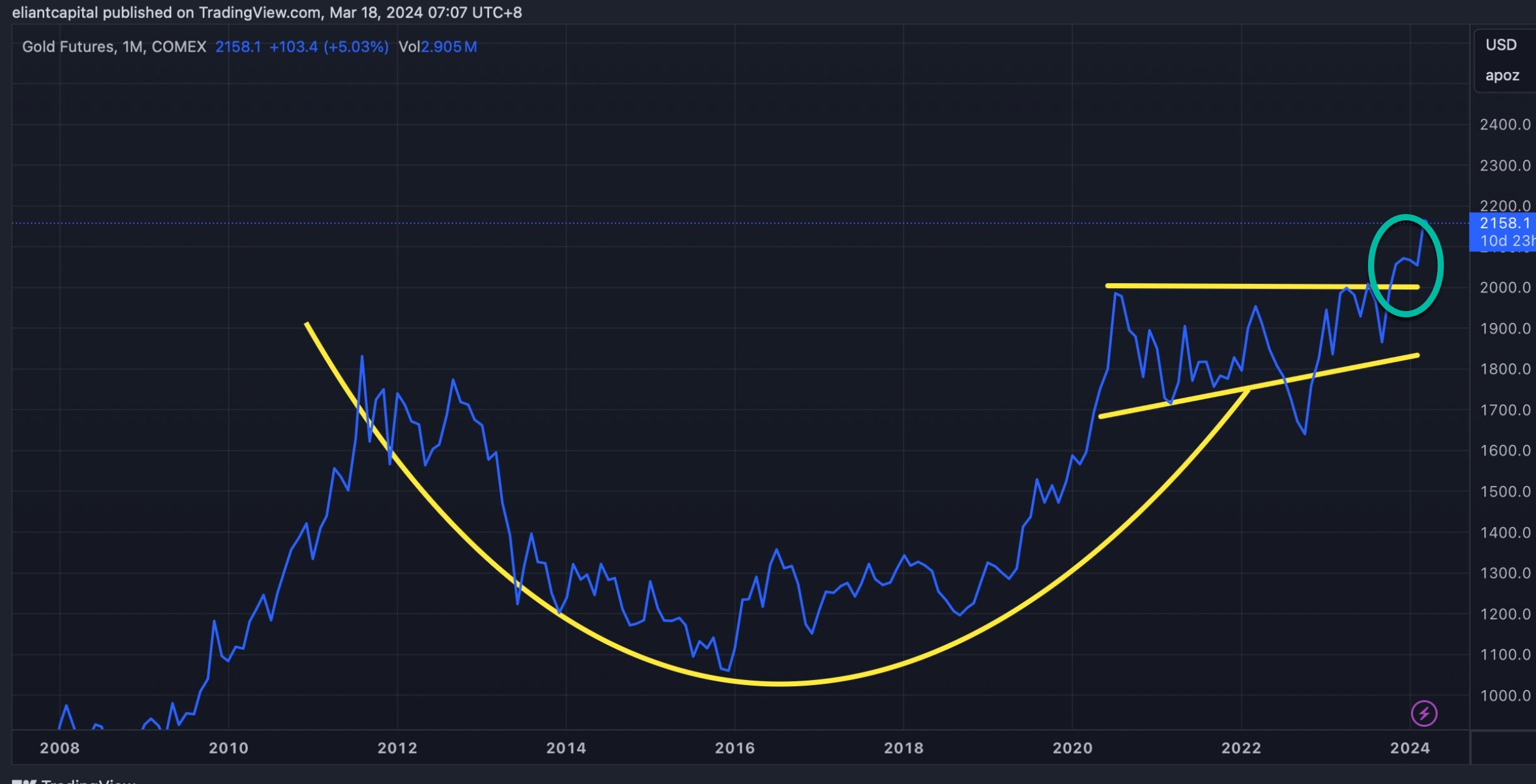Why Gold Is Soaring
The problem with thinking is the risk of overthinking. At least that’s the case when it comes to gold. A few weeks ago when gold broke out, some traders were paralyzed by analytical disbelief. How could gold break out now?
Traditional analysis says quantitative easing and increased money supply should lead to higher gold prices. As the Fed raises rates or keeps rates elevated and money supply is constrained, it should hurt gold.
As such, there is no reason for gold to break higher. But there’s just one little flaw in that broadly spoken argument. And we’ll explain it below.
Key Points
- While many gold bugs believe money supply and gold prices are correlated, the truth is more nuanced as history reveals.
- The movement of gold over the past decade and the most recent breakout highlight that the traditional narrative is flawed.
The Problem Gold Bugs Face
The only one “small gotcha” with the gold argument is that the last decade didn’t play out as theory would have forecast. If gold rises when rates fall and money supply is abundant, why didn’t gold soar?
The reality is that gold is much more tethered to confidence in government than money supply. What gold bugs have conflated is the money supply in the Weimar Republic mushrooming and gold soaring with the fact that gold soared when the confidence in government crashed.
Money supply alone doesn’t necessarily lead to gold rising. Equally, elevated rates don’t necessarily lead to gold staying contained. If confidence declines, a very real risk exists that gold will rise. And indeed the increased realization that the Federal Reserve is in a box and trapped has sparked a rally in the precious metal.
Courtesy: eliant_capital
How To Play The Gold Breakout
What the gold breakout teaches is that the more consumed a trader is in their “narrative” the less likely they can have the confidence needed to buy breakouts when they occur.
Steve Cohen once observed that most investors are poor at observing and accepting reality. In the case of gold recently, reality revealed a breakout but the narrative many gold bugs clung to hindered their ability to jump on board.
Could the breakout be proven false? Of course. But the point is to trade what you see, not what you think will happen. If a breakout succeeds, buy it. If a breakout fails, sell it. It’s simple as that.
For gold, the bulls are in charge now until the price dictates otherwise. It’s the price that reveals reality. The narrative is just a figment of logic, and it may be right, but it may lead you astray.




